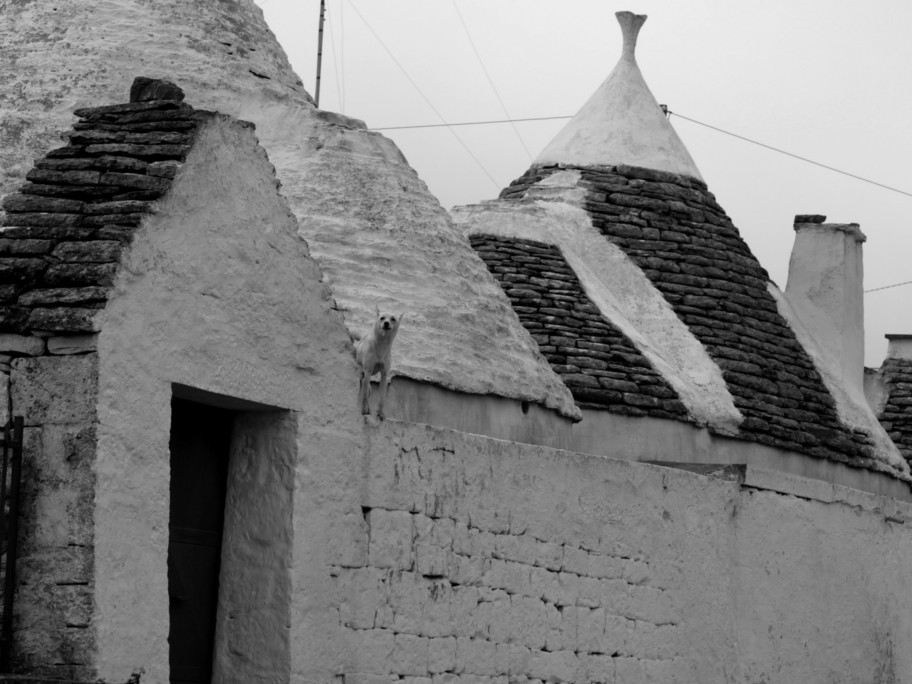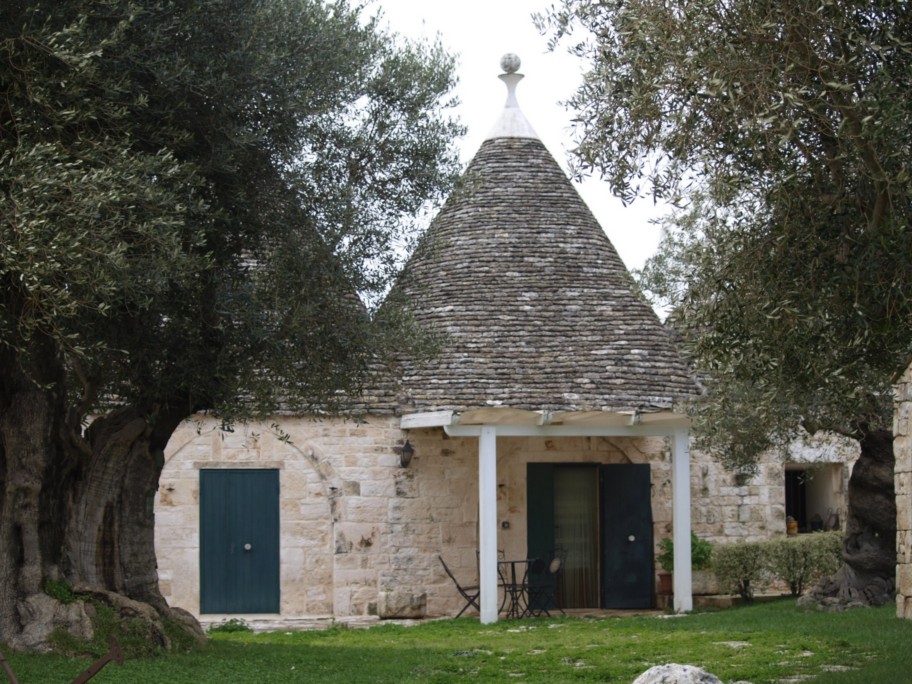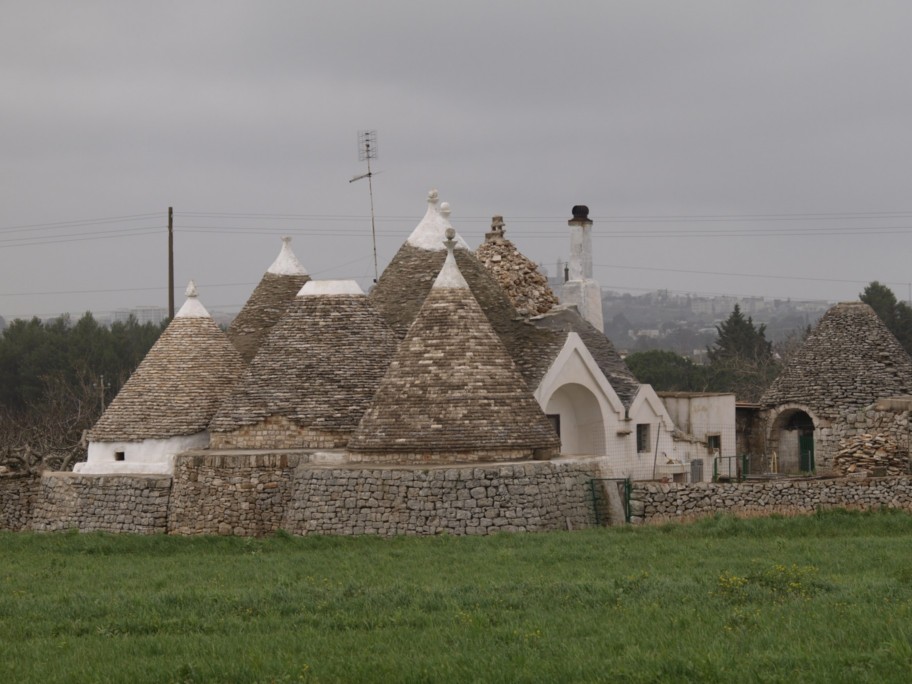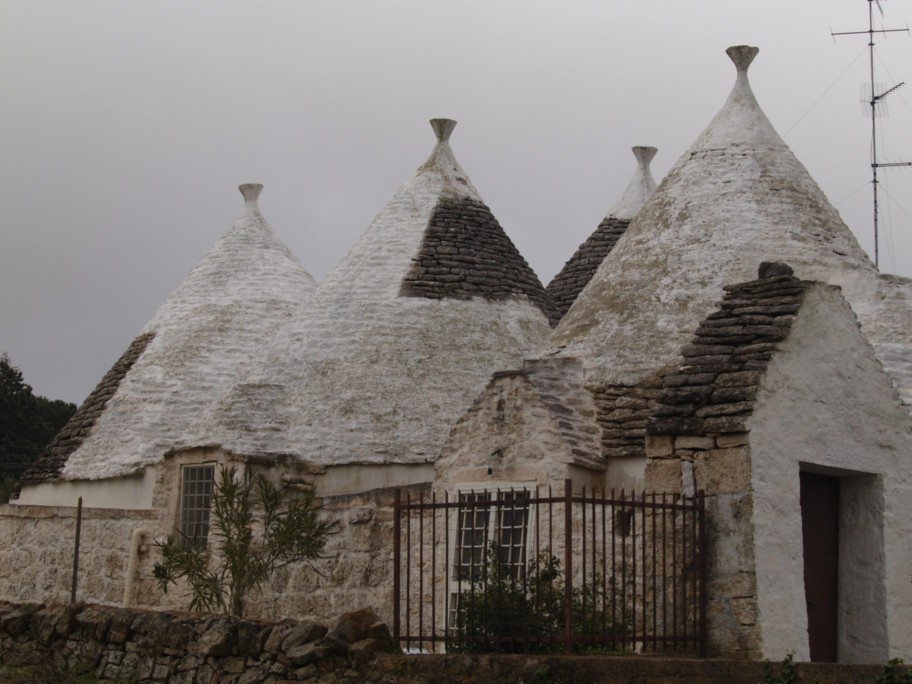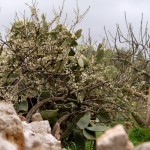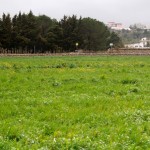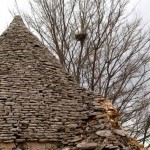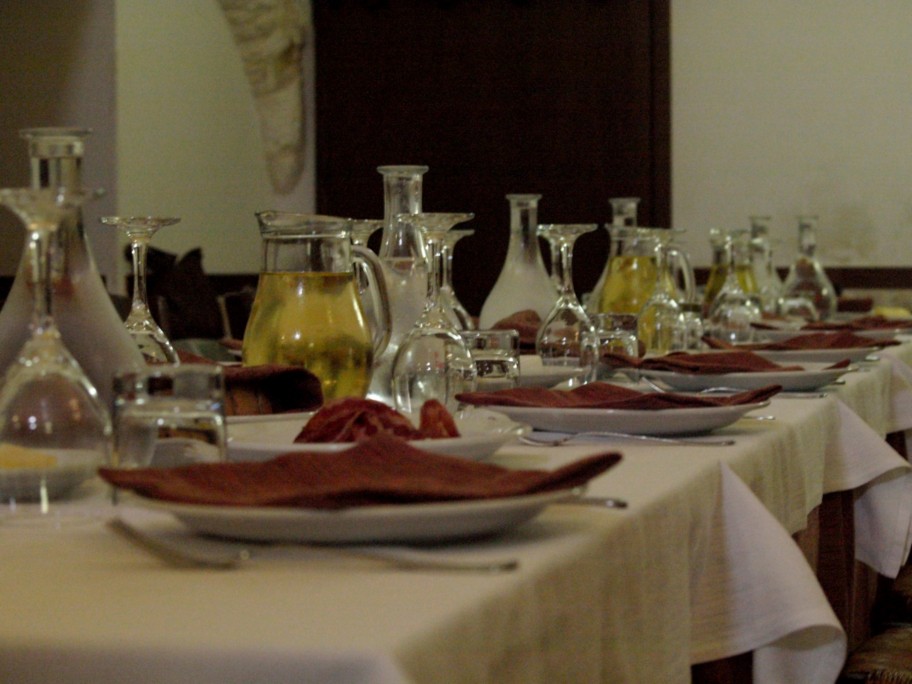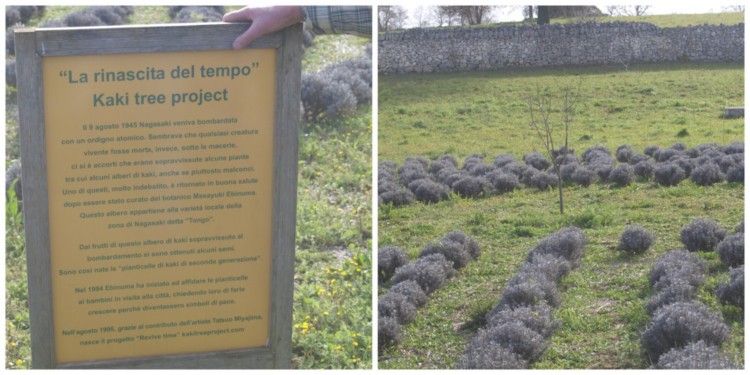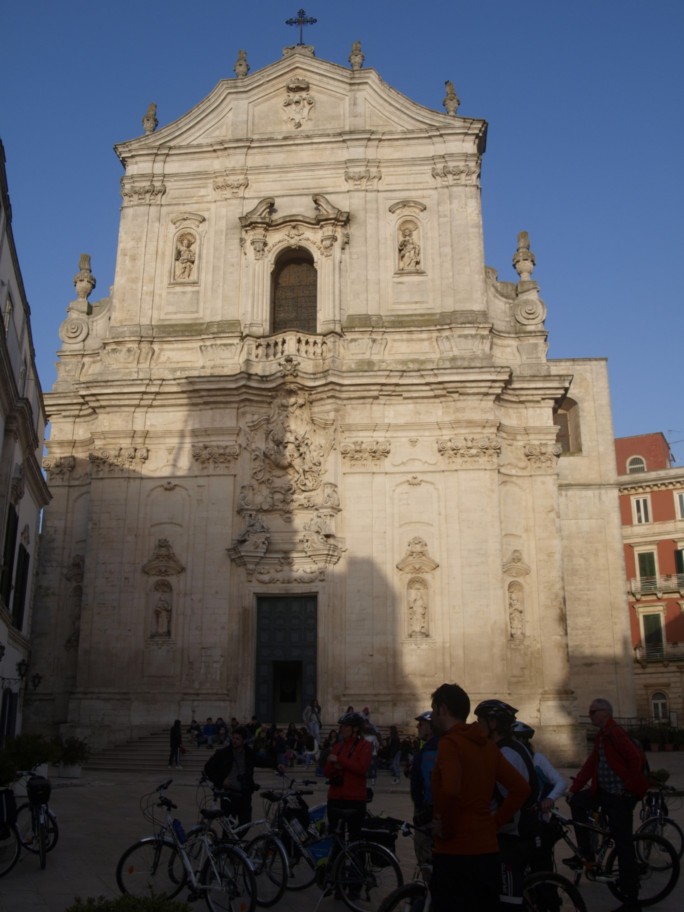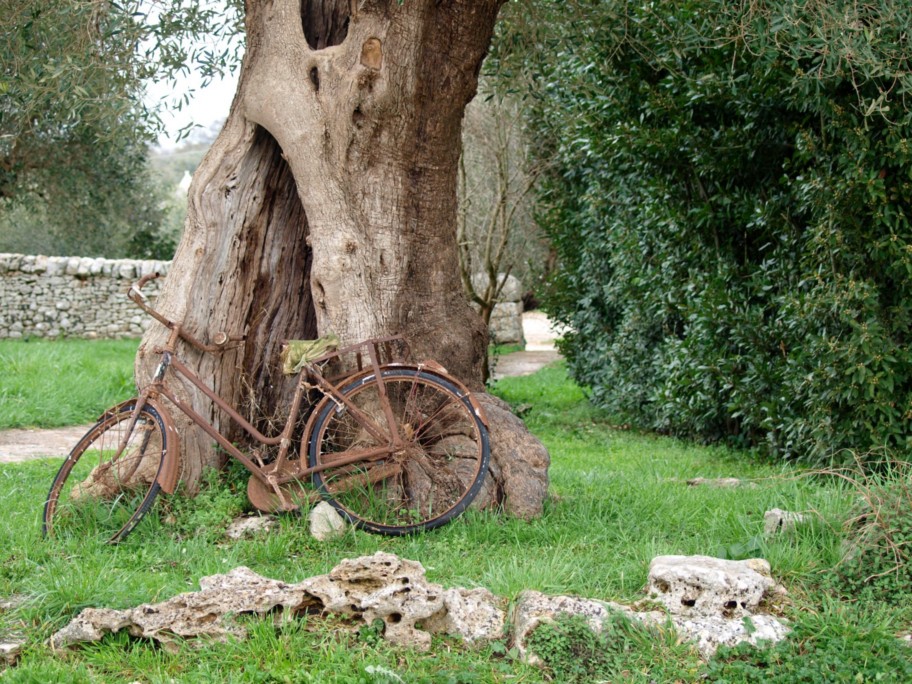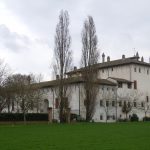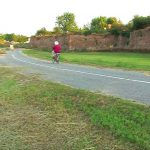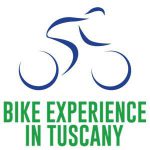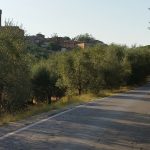Enjoy the cycling on the back roads and visit Villa Ghirardina
Our bike tour in the Valle d’Itria discovering the trulli!
“We are 400 years old and we don’t feel our age! We are trulli”
by Wolfango & Francesca
Thanks to Bikeitalia we could find out about the chance to visit the Itria Valley and its trulli -the traditional cylindrical houses with conical roofs. And Cyclingpuglia is organizing our journey in the Valle d’Itria, the area including the districts of Cisternino, Locorotondo and Martina Franca. It is also known as ‘Valle dei Trulli‘ due to the abundant presence of the trulli.
DAY 1
Some months later… The alarm clock goes off, we wake up, but it’s late!! We have a plane to catch! We land in Bari, where we meet Fanio, the person in charge for Cyclingpuglia and our personal bike tour guide, and Giuseppe, our bicycle mechanic. Both seem very nice and kind. Learning all about their All Inclusive service, we realize we won’t have any troubles at all: they will take care of all the bicycle transports, to and from the station or the airport. This service is included. They bring us to a charming 4 stars hotel, the Villa Rosa Hotel in Martina Franca. If it had been high season we would have stayed in a holiday farmhouse or in a trullo hotel (which sounds perfectly in line with the spirit of this slow tour!).
After the welcome cocktail, we are ready to start the exploratory tour of this amazing valley. We distance ourselves pretty soon from the city traffic and we cycle along beautiful secondary roads in the countryside, characterized by little dry stone walls. We are near and yet far from civilization. Since there are no cars, the silence is absolute; the only audible sound is the chit-chat of our travel buddies and the typical clicking sound of the wheel when we are not pedalling. We finally get a glimpse of the first trulli on the horizon, so we stop our bikes to admire this sort of houses, so different from what we are used to call house.
We start taking pictures of them while listening to their history. We find out that in the 10th century the farmers who had to look after the landowners’ lands were allowed to build their own houses on them, and they didn’t have to pay taxes for it. In this way the first trulli were built: with the stones the farmers found while tilling the land. We don’t want to miss a single thing of this amazing valley, so we get on our bikes and soon we arrive at the Madonna dell’Arco Manor Farm. Here we visit their cheese factory and we taste some of their products: ricotta cheese, caciocavallo cheese and even the capocollo (a pork cold cut). We are amazed by the way they prepare the mozzarella and they even give us the unique opportunity to taste this fresh delicacy. We cannot find the words to describe such a thing. It is something you should try at least once in your life. It is noteworthy that this manor farm offers home delivery service to taste their delicacies without troubles!
Back to the bikes, the weather is a bit windy. At least it stopped raining. We should come back to the hotel but we prefer to stop quickly at the Aprile Manor Farm. Here you can even enter some 17th century trulli, which will tell you “We are 400 years old and we don’t feel our age! We are trulli”.
There is also a beautiful balcony, from which you can admire the valley and Locorotondo. But since the wind is getting stronger we decide to head back to the hotel. Cycling now is very hard, because we are going uphill and against the wind. Luckily Fanio arranged a car precisely for those who can’t cycle any more. Back in the hotel we take a relaxing shower and we have dinner. After dinner we finally visit Locorotondo. Now is time to get some rest, tomorrow is going to be a long day!
- cycling in the nature in the Valle d’Itria
- landscape in the Valle d’Itria
- roof of a trullo
DAY 2
Today it pretty warm, the sun is shining and we are ready for a wonderful relaxing day. We ride our bikes on narrow streets in Martina Franca. Our destination is the Ciclovia dell’Acquedotto pugliese (Apulia water main cycle path). It was the GAL Valle d’Itria, the Local Action Group, who achieved to redevelop the water main road and converted it into a safe cycling path. Moreover, they redeveloped a former road inspector’s house in Contrada Figazzano, which now is a rest stop for tourists. There you can also find a map of the path. But this is just a part of the 300 km bicycle tour in the Valle d’Itria. For further information.
After visiting the former road inspector’s house we arrive in Gianca Manor Farm, where we have a delicious lunch. To follow, we visit the farm. If you want to visit the valley, immerse yourself into the nature and sleep in a trullo this is the place for you!
After lunch we head towards the Botanical Conservatory- the Pomona Gardens, named after the Latin goddess of the vegetable and fruit gardens, Pomona. Here we meet Paolo Belloni, the curator of the conservatory, who tells us that in the garden there are more than 300 varieties of fig trees. In the conservatory they are working on the “Edible Forest” project for a permaculture plantation that does not need irrigation systems. The aim is to create a soil that can keep rain water and avoid the dispersions caused by the placer mining of the slope and the evaporation due to heat or wind.
According to me, the main attraction of the conservatory is the Tatsuo persimmon tree. It derives from a persimmon tree that survived the atomic bomb in Nagasaki and soon turned into a symbol of peace. After being reinvigorated, the seeds of this tree have been distributed around the world in order to demonstrate that peace can survive everything, even an atomic bomb. The tree in the conservatory keeps this meaning, as its “mother” and “sisters” do, but there is more. 596 lavender plants grew around it, forming a sort of maze that stands for all the difficulties we have to face in order to reach the peace. We thank Paolo Belloni and we get on our bikes again. This time we cycle on secret roads discovering new amazing areas of this valley.
On our way back we jump at the chance to visit the city centre of Martina Franca and the San Martino Basilica. If you come to the valley by the end of July, you can attend the famous International Opera Festival. This event gathers artists from all over the world, who perform inside the Palazzo Ducale.
Back to the hotel we get some rest. We will spend the evening in Cisternino, where we will also visit the Matrice di San Nicola Church. Cisternino overlooks the whole valley: from its panoramic viewpoint we can admire by night both Locorotondo and Martina Franca.
We have dinner in a local Fornello (a butcher shop, in which you can have your meat cooked immediately), where we taste delicious meat and wine. There is nothing better to refresh ourselves! We are full and tired, so we come back to the hotel to get some rest. Tomorrow is our last day.
DAY 3
The alarm goes off but… It is raining really hard. Bad luck! We have breakfast and Fanio tells us that the rain won’t stop us! He has already arranged the cars for today. Our destination is the Cooperativa sociale UPAL(social cooperative), which includes more than 800 wine and oil producers of the Itria Valley. There we learn that until the 1970s the vineyards in the valley measured about 30.000 hectares. Then they decreased and were replaced with olive cultivations, which are much cheaper. The aim of the Cooperativa is not only to preserve the olive cultivations, but also to remind one of those almost lost local vineyards. Here we taste the oil and we learn something more about it. As in the wine making process, there are some steps you have to follow; for instance you have to bring the oil to blood heat in order to taste better its aroma. After the tasting, we visit the cellar, where some local wines, such as the Verdaca and the Minutolo, are produced. Unfortunately we have a plane to take, so we come back to the hotel where we say good-bye to our friends and we go to the airport.
Ciao Puglia, ciao Valle dei Trulli! Thanks for this amazing experience! We hope we will see you again as soon as possible and we will cycle again along these wonderful paths, surrounded by nature and… trulli, of course!
Thanks Bikeitalia for telling us about this amazing tour.
We trulli hope we will come back soon! Thanks for everything!
Wolfango & Francesca
Visit Apulia: helpful hints
Italian name: Puglia
Arrival
The Italian region Apulia is located in Southern Italy. There are four airports in there: the northern one is the Foggia airport, in the middle is the Bari airport, then going souther you can find the Brindisi airport and the Taranto airport. From all these airports you can reach several cities by bus and train or renting a car directly at the airport.
Transports
You can move around Apulia by car, buses or trains: check on the official tourism website a full list of all the options, included a useful bus & train schedule to and from the airports of Bari and Brindisi. Consider also the ferry option, to get to Tremiti Islands!
What to do
As mentioned, region Apulia is in the very South, the heel of Italy. Some places we recommend you to visit: Castel del monte, a great fortress UNESCO World Heritage site; the National Parks of Gargano and Alta Murgia; the Tremiti Island archipelago, especially San Domino Island. For a seaside holiday, plan your visit in Salento! Actually, the whole region is a great destination for sailing lovers: all along the coasts you can spot many wonderful marine caves and bays – i.e. Turkish Bay, Poetry Cave, Zinzulusa Cave, etc. Don’t miss a stop to Alberobello village, where are the famous Trulli (the traditional Apulian dry stone huts with a conical roof). Enjoy also some sightseeing around the local art cities (Lecce and Ostuni, first).
Some special tips by Italia Slow Tour: a bike tour on the bike lane of Itria valley and a visit to a typical Italian historical village – aka borgo – called Biccari. Don’t leave without a taste of some typical Apulia products like the burrata from Andria, the Altamura bread, the local taralli, the famous orecchiette fresh pasta and so on.

